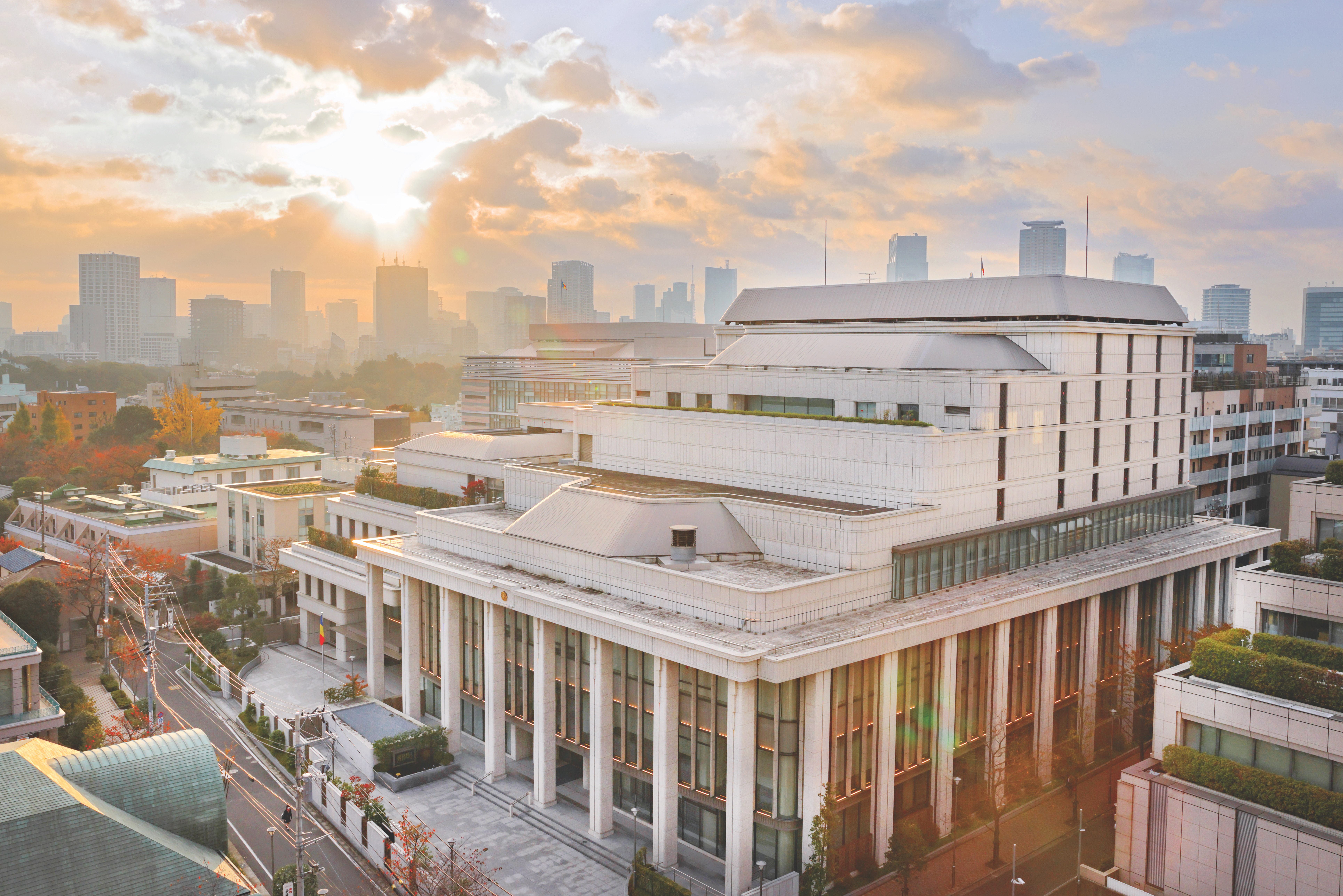From the Nov. 24 issue of the Seikyo Shimbun, the Soka Gakkai’s daily newspaper
Together with our fellow members together with our fellow members around the globe, solidly united in shared purpose, we have been able to celebrate the Soka Gakkai’s 90th anniversary in brilliant victory!
I am deeply grateful for the many congratulatory messages we have received from people in various fields throughout Japan and the world. How happy first and second presidents Tsunesaburo Makiguchi and Josei Toda would surely be!
On Nov. 21, my wife, Kaneko, and I visited the Soka Gakkai Mentors Hall (in Tokyo). We did gongyo and chanted Nam-myoho-renge-kyo there in the spirit of reporting everything to Presidents Makiguchi and Toda, offering prayers in memory of them and all our treasured friends who have passed away. We also chanted wholeheartedly for the health, happiness and victory of our entire Soka family.
Nichiren Daishonin writes: “When the skies are clear, the ground is illuminated. Similarly, when one knows the Lotus Sutra, one understands the meaning of all worldly affairs” (“The Object of Devotion for Observing the Mind,” The Writings of Nichiren Daishonin, vol. 1, p. 376).
Since embracing faith in Nichiren Buddhism, Mr. Makiguchi cherished this passage and strove to illuminate the darkness of troubled times with the light of the Daishonin’s Buddhism of the Sun.
His passionate call to “be a person of courage and determination who takes active steps for good”[1] is the starting point of the Soka Gakkai spirit.
Thanking members of the women’s division for their dedicated efforts during the Osaka Campaign,[2] Mr. Toda said: “Genuine disciples of Nichiren, true agents of change, are those who put Buddhism into practice in society and strive as hard as they can for the welfare of others, their country and the world. That’s what the Soka Gakkai is all about.”
We have now made a fresh and energetic start in our efforts to realize kosen-rufu and the Daishonin’s ideal of “establishing the correct teaching for the peace of the land,” as we aim toward our 100th anniversary (in 2030). I am confident that there is no better way of repaying our debt of gratitude to Presidents Makiguchi and Toda.
During Labor Thanksgiving Day (Nov. 23 in Japan), commemorated this year amid the coronavirus pandemic, I chanted Nam-myoho-renge-kyo with deep appreciation for the tireless dedication of all the essential workers who help keep our society running, including doctors, nurses and other healthcare professionals.
In each of their respective fields of mission and workplaces, our members everywhere are making wonderful contributions through their sincere, persevering efforts.
Youth, in particular, is a time filled with difficulties and worries, such as problems with work.
I hope our young people will seek advice from trusted friends and seniors in faith and, while encouraging and supporting one another, strive to overcome each challenge with courageous faith.
The Daishonin writes, “Iron, when heated in the flames and pounded, becomes a fine sword” (“Letter From Sado,” WND-1, 303). Young Bodhisattvas of the Earth who chant Nam-myoho-renge-kyo and tackle the challenges in front of them can turn any hardship into training for their growth and development. They can forge and polish their lives into shining swords of truth and justice, vanquishing all devilish functions and championing people’s happiness.
On Nov. 20, 1957, Mr. Toda was forced by ill health to cancel a long-anticipated trip to Hiroshima. Deeply aware of his disappointment and frustration, I prayed for his recovery and strengthened my determination to write The Human Revolution. In my diary that day, I noted: “A sense of mission and hope is welling up from deep within me … I will write for posterity a record of President Toda’s life.”[3]
I later fulfilled this vow by completing the novels The Human Revolution and The New Human Revolution. Now, my dear successors throughout the world are joining me in heart-to-heart dialogues as they read these works.
I am praying and watching over all of you, with the wish that you will continue to write fresh pages of the story of your own human revolution and brim with the founding spirit of Soka as you strive wholeheartedly for kosen-rufu, for world peace.
References
- Translated from Japanese. Tsunesaburo Makiguchi, Makiguchi Tsunesaburo zenshu (Collected Works of Tsunesaburo Makiguchi), vol. 6 (Tokyo: Daisanbunmei-sha, 1983), p. 180. ↩︎
- Osaka Campaign: In May 1956, the Kansai members, uniting around the young Daisaku Ikeda, who had been dispatched by Second Soka Gakkai President Josei Toda to support them, introduced 11,111 households to the practice of Nichiren Buddhism in a single month. ↩︎
- See Daisaku Ikeda, A Youthful Diary (Santa Monica, California: World Tribune Press, 2000), pp. 356–57. ↩︎
You are reading {{ meterCount }} of {{ meterMax }} free premium articles

